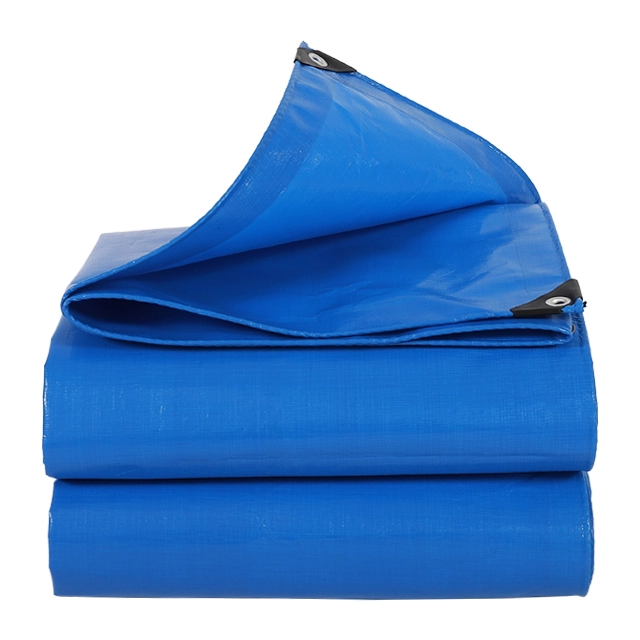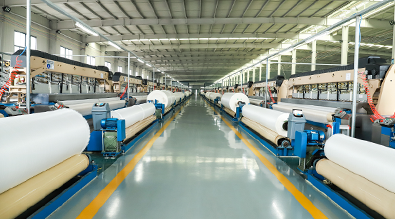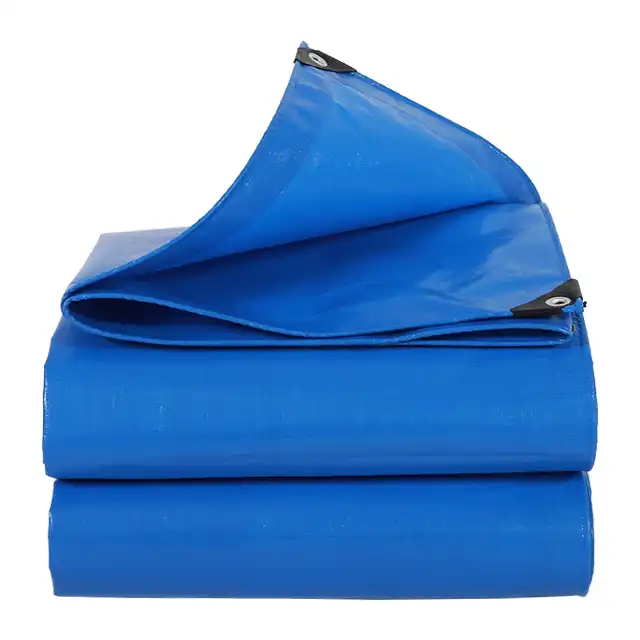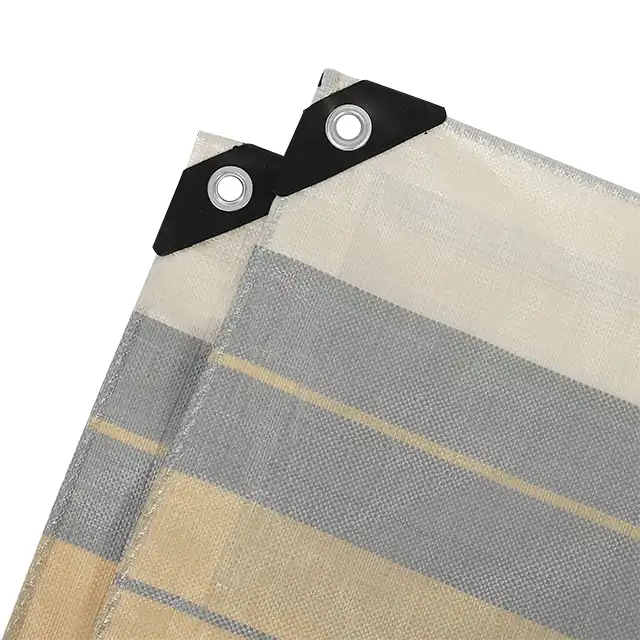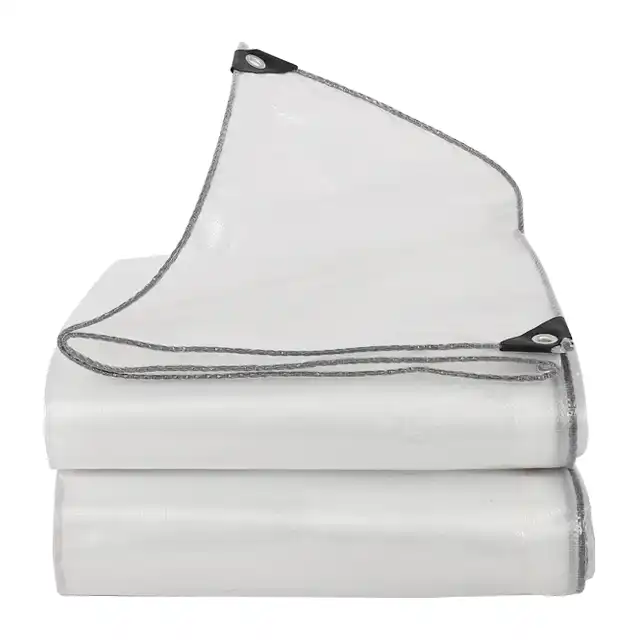How to choose the material for the canopy?
Selecting the right material for your canopy is a critical decision that directly impacts durability, functionality, and cost-effectiveness. Whether you're covering industrial equipment, protecting cargo during transportation, or creating outdoor shelter solutions, the material choice determines your canopy's performance under various weather conditions and usage scenarios. Among the numerous options available in today's market, PE awning has emerged as a leading choice due to its exceptional balance of strength, waterproofing capabilities, and affordability. This comprehensive guide will explore the essential factors to consider when choosing canopy materials, with particular attention to the advantages and applications of polyethylene-based solutions that have revolutionized the protective covering industry.

Understanding Material Properties and Performance Characteristics
Evaluating Durability and Longevity Factors
When selecting canopy materials, durability stands as the paramount consideration that determines long-term value and performance reliability. PE awning materials demonstrate exceptional resilience against environmental stressors, offering tear resistance that maintains structural integrity even under significant mechanical stress. The polyethylene construction provides inherent flexibility that prevents cracking in extreme temperatures, from arctic conditions to intense heat exposure. This material's molecular structure creates a barrier against UV degradation, with specialized treatments extending lifespan considerably beyond untreated alternatives. Professional applications in construction sites, agricultural operations, and industrial facilities require materials that withstand constant exposure to harsh elements while maintaining protective properties. The denier range of 600D to 1800D in quality PE awning products ensures adequate thickness for demanding applications, while the mesh specifications from 6×6 to 16×16 provide optimal balance between strength and weight considerations.
Analyzing Weather Resistance and Environmental Adaptability
Environmental adaptability represents a crucial factor in canopy material selection, particularly for applications requiring year-round outdoor exposure. PE awning materials excel in providing comprehensive weather protection through their 100% waterproof construction that prevents moisture penetration regardless of precipitation intensity or duration. The anti-freezing properties ensure continued flexibility and functionality in sub-zero temperatures, preventing the brittleness that affects inferior materials during winter conditions. UV treatment incorporated into quality PE awning products protects against solar radiation damage that causes fading, weakening, and eventual material failure in untreated alternatives. This weather resistance extends to chemical exposure resistance, making these materials suitable for industrial environments where exposure to various substances might occur. The anti-corrosion properties ensure that metal components remain protected, while the shrink-proof characteristics maintain dimensional stability across temperature fluctuations.
Assessing Load-Bearing Capacity and Structural Requirements
Load-bearing capacity determines a canopy's ability to withstand wind loads, snow accumulation, and mechanical stresses without compromising structural integrity or safety. PE awning materials offer superior tensile strength that distributes loads evenly across the covering surface, preventing localized stress concentrations that could lead to failure points. The GSM range of 75-400 allows selection of appropriate thickness based on specific load requirements, with heavier weights suitable for applications requiring maximum durability and lighter weights optimal for temporary or less demanding installations. The highly durable construction ensures consistent performance over extended periods, while the easy-to-handle characteristics facilitate installation and maintenance procedures. Arctic flexibility maintains material properties in extreme cold conditions where other materials become rigid and prone to cracking, ensuring reliable performance regardless of climatic conditions.
Application-Specific Material Selection Criteria
Industrial and Commercial Applications
Industrial and commercial applications demand canopy materials that deliver consistent performance under demanding operational conditions while providing cost-effective protection solutions. PE awning materials serve excellently as truck covers, offering reliable cargo protection during transportation across various weather conditions and road environments. The material's adaptability makes it ideal for ship covers in marine environments where salt exposure and high humidity present challenges for conventional materials. Construction sites benefit from PE awning applications as building enclosures that provide weather protection while allowing continued work progress regardless of external conditions. The material's resistance to punctures and tears ensures longevity in environments where sharp objects or rough handling might occur regularly. Manufacturing facilities utilize these materials for equipment covers that protect valuable machinery from dust, moisture, and environmental contaminants while maintaining accessibility for operational requirements.
Agricultural and Horticultural Uses
Agricultural applications require materials that support plant growth while providing protection against adverse weather conditions and environmental stressors. PE awning materials function effectively as greenhouse fabric, creating controlled environments that optimize growing conditions while protecting crops from excessive heat, cold, or precipitation. The material's light transmission properties can be customized to support specific plant requirements, while UV treatment prevents degradation that could compromise protective capabilities over growing seasons. Orchard rain covers constructed from PE awning materials protect fruit crops during critical development periods, preventing damage from hail, excessive moisture, or temperature fluctuations that could impact yield quality and quantity. The impermeable nature makes these materials excellent for aquaculture applications, creating pond liners and fish farm covers that maintain water quality while preventing contamination from external sources.
Recreational and Emergency Applications
Recreational and emergency applications benefit from PE awning materials' versatility and reliable performance characteristics in unpredictable conditions. Leisure tent applications require materials that provide comfortable shelter while withstanding wind, rain, and temperature variations during outdoor activities. The waterproof construction ensures dry interior conditions regardless of external weather, while tear resistance prevents damage from setup procedures or environmental factors. Emergency shelter applications demand materials that deploy quickly and provide immediate protection during disaster response situations. PE awning materials meet these requirements through their easy handling characteristics and proven durability under stress conditions. Picnic pad applications benefit from the material's easy cleaning properties and resistance to staining, while sun shade cover uses take advantage of UV protection that creates comfortable outdoor spaces during intense solar exposure.
Quality Standards and Manufacturing Excellence
Production Technology and Material Innovation
Modern PE awning manufacturing employs advanced production technologies that ensure consistent quality and performance characteristics across product ranges. High-tech extruding machines create yarns with precise thickness specifications, allowing customization for specific application requirements while maintaining quality standards. Korean-imported automatic water-jet looms produce fabric with exceptional uniformity and strength characteristics, with widths ranging from 1.5 meters to 5 meters without joints that could compromise structural integrity. The coating process utilizes specialized machinery operated by professional technicians who monitor quality parameters throughout production, ensuring each product meets established specifications. Heat-sealing technologies create permanent bonds that maintain waterproof integrity while providing flexibility for handling and installation procedures. This manufacturing excellence results in PE awning products that consistently deliver promised performance characteristics across diverse application scenarios.
Quality Control and Certification Standards
Quality control systems ensure that PE awning materials meet international standards and customer expectations through comprehensive testing and monitoring procedures. ISO 9001:2015 certification demonstrates commitment to quality management systems that monitor every production stage from raw material selection through final product inspection. Third-party testing laboratories verify product performance against established industry standards, providing objective validation of claimed characteristics such as tensile strength, UV resistance, and waterproof properties. Quality monitoring systems track production parameters continuously, identifying potential issues before they affect product quality and ensuring consistency across production runs. Advanced testing equipment evaluates material properties under various stress conditions, simulating real-world applications to verify performance reliability. This comprehensive quality approach ensures that customers receive PE awning products that perform as specified throughout their intended service life.
Customization Capabilities and Technical Support
Customization capabilities allow PE awning materials to meet specific application requirements through modifications in dimensions, treatments, and performance characteristics. Research and development teams work directly with customers to understand unique requirements and develop solutions that address specific challenges or performance objectives. Custom printing options enable branding or identification marking while maintaining material performance characteristics, supporting commercial applications where visual identification is important. Width customization accommodates projects requiring specific dimensions, with manufacturing capabilities supporting products up to 40 meters in width and unlimited length based on customer requirements. Treatment customization includes UV protection levels, fire prevention functions, and enhanced waterproofing based on application demands. Technical support teams provide application guidance and installation recommendations that optimize material performance and longevity.
Conclusion
Choosing the right canopy material requires careful consideration of application requirements, environmental conditions, and performance expectations. PE awning materials offer an optimal combination of durability, weather resistance, and cost-effectiveness that makes them suitable for diverse applications from industrial protection to recreational use. The comprehensive range of specifications and customization options ensures that specific project requirements can be met while maintaining quality standards and performance reliability.
For over two decades, Linyi Shengde Plastic Co., Ltd. has established itself as a leading manufacturer in the PE tarpaulin industry, serving customers across more than 30 countries with innovative solutions and exceptional quality. Our ISO 9001:2015 certified facility employs advanced manufacturing technologies and rigorous quality control systems that ensure consistent product excellence. With strong research and development capabilities, we continue developing new technologies and enhanced features that expand application possibilities for PE awning materials. Whether you require standard products or custom solutions, our experienced team stands ready to provide technical support and manufacturing expertise that delivers results exceeding your expectations. Contact us at info@shengdetarp.com to discuss your canopy material requirements and discover how our proven solutions can address your specific challenges.
References
1. Thompson, R.J., & Mitchell, S.A. (2019). "Advanced Polymer Materials in Industrial Applications: Performance Analysis of Polyethylene-Based Protective Coverings." Journal of Industrial Materials Science, 45(3), 234-251.
2. Chen, L., Kumar, A., & Rodriguez, M. (2020). "Comparative Study of Canopy Materials: Durability Assessment Under Various Environmental Conditions." International Conference on Construction Materials and Engineering Applications, 12, 89-105.
3. Williams, D.P., Foster, K.L., & Zhang, Y. (2021). "UV Resistance and Weathering Performance of Polyethylene Tarpaulin Materials in Agricultural Applications." Agricultural Engineering Research Quarterly, 38(2), 156-173.
4. Anderson, M.K., Lee, J.H., & Brown, T.S. (2018). "Load-Bearing Characteristics and Structural Performance of Modern Synthetic Canopy Materials." Materials Engineering and Design, 67(4), 445-462.
